Rice is a big deal around the world. It’s cheap, fills you up, and you can do a lot with it. But when it comes to picking between red rice and brown rice, things can get a bit confusing. Both have their own perks, but Is red rice healthier than brown rice? Let’s dig into what makes these two types of rice different and see if red rice really is healthier than brown rice.
Key Takeaways
- Red rice is packed with antioxidants, thanks to its anthocyanins, which might give it an edge in fighting off diseases.
- Brown rice is a fiber powerhouse, helping with digestion and keeping you full longer, which is great for weight management.
- Both types of rice have similar amounts of calories and protein, but they shine in different nutritional areas.
- Red rice may help with heart health and diabetes management due to its unique nutrients.
- Choosing between red and brown rice might come down to personal health goals, like weight loss or managing cholesterol.
Nutritional Comparison of Red Rice and Brown Rice
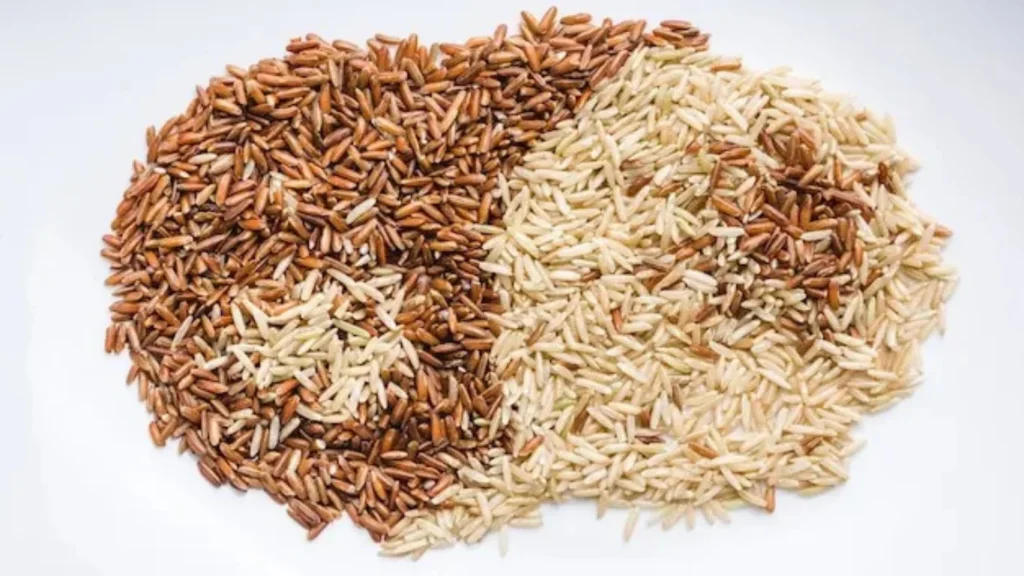
Antioxidant Content in Red Rice
Red rice is packed with antioxidants, which are vital for fighting off free radicals in your body. The standout component here is anthocyanins, the pigment giving red rice its vibrant hue. This pigment not only adds color but also boosts health by reducing inflammation and protecting against chronic diseases. Interestingly, red rice has about ten times the antioxidant capacity of brown rice, making it a powerhouse for those who prioritize antioxidants in their diet.
Fiber and Protein Levels in Brown Rice
When it comes to fiber and protein, brown rice holds its ground. It’s a whole grain, meaning it retains the bran and germ layers, which are rich in fiber. This fiber content helps in digestion and keeps you feeling full longer. Brown rice also offers a decent amount of protein, which is essential for muscle repair and growth. For those aiming to maintain or lose weight, the fiber and protein in brown rice can be a game-changer.
Vitamin and Mineral Differences
Both red and brown rice are nutritious, but they shine in different areas. Red rice is a good source of manganese and selenium, which are crucial for metabolic functions and immune support. On the other hand, brown rice is rich in iron and zinc, important for blood production and immune function. While both types of rice offer a variety of vitamins and minerals, choosing between them might come down to which specific nutrients you need more of in your diet.
Red and brown rice each bring unique nutritional benefits to the table. Whether you’re looking for antioxidants or fiber, there’s a rice type that can fit your dietary needs. Balancing both in your meals might just give you the best of both worlds.
Health Benefits of Red Rice
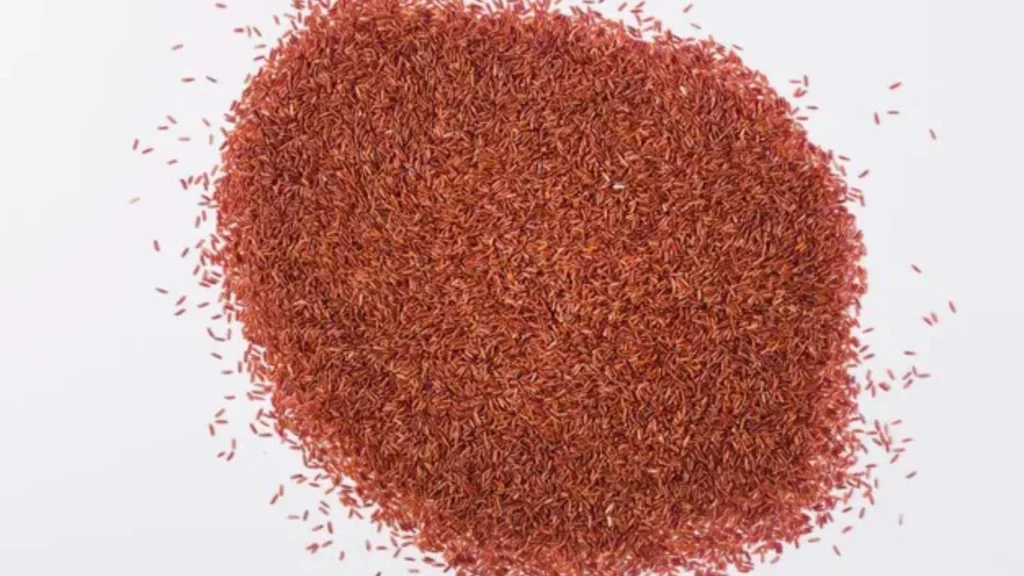
Role of Anthocyanins in Red Rice
Red rice owes its vibrant color to anthocyanins, which are powerful antioxidants. These compounds not only give red rice its unique hue but also contribute to its health benefits. Anthocyanins are known for their ability to combat free radicals, potentially reducing the risk of chronic diseases. They play a role in reducing inflammation and may help in preventing heart disease and type 2 diabetes.
Impact on Heart Health
Including red rice in your diet can positively affect heart health. Its high levels of antioxidants, particularly anthocyanins, may help lower the risk of heart disease. The fiber content in red rice also contributes to heart health by helping to lower cholesterol levels. Daily consumption of red yeast rice for six to eight weeks may effectively reduce total cholesterol and LDL (bad) cholesterol levels, according to some studies.
Red Rice and Diabetes Management
For those managing diabetes, red rice can be a beneficial addition to their diet. The fiber in red rice helps in slowing down the digestion process, which can lead to more stable blood sugar levels. Additionally, the presence of anthocyanins may aid in improving insulin sensitivity. This makes red rice a favorable choice for individuals looking to manage their blood sugar levels effectively.
Red rice offers a rich source of antioxidants and fiber, making it a strong contender in promoting overall health. Whether you’re looking to support your heart or manage blood sugar levels, red rice brings a wealth of benefits to the table.
Health Benefits of Brown Rice
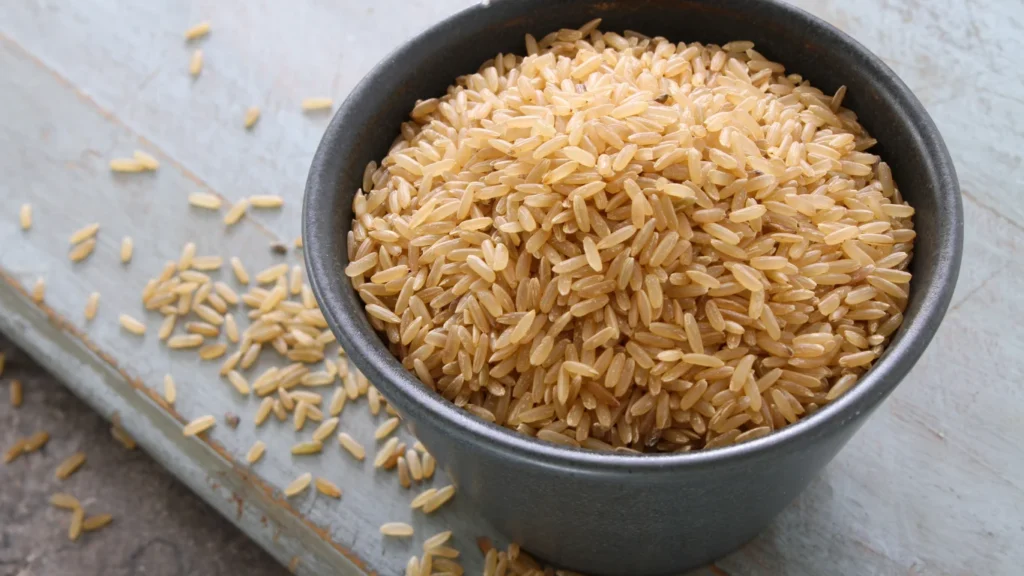
Flavonoid Antioxidants in Brown Rice
Brown rice is packed with flavonoid antioxidants like apigenin, quercetin, and luteolin. These compounds are pretty important in the fight against chronic diseases. Regularly munching on foods rich in flavonoids, like brown rice, might help lower the risk of heart disease and some cancers. Brown rice, with its whole grain goodness, keeps these beneficial compounds intact, unlike white rice, which loses them during milling.
Brown Rice and Weight Management
When it comes to keeping the pounds off, brown rice might be your ally. It’s got more fiber and protein compared to white rice, which means it can help you feel full longer. This sense of fullness can stop you from reaching for that extra snack. Plus, there’s evidence suggesting that swapping white rice for brown rice can lead to weight reduction.
Effects on Blood Sugar Control
For those watching their blood sugar, brown rice might be a better choice. It’s got a lower glycemic index than white rice, which means it doesn’t spike your blood sugar as quickly. This slower digestion can help maintain steady blood sugar levels. However, while it might help with weight, some studies found it doesn’t have a huge impact on blood sugar control for folks with pre-diabetes or type 2 diabetes.
Eating brown rice regularly can contribute to better overall health due to its nutrient-rich profile. Its combination of fiber, protein, and antioxidants makes it a wholesome choice for many looking to maintain or improve their health.
Brown rice offers numerous health benefits, including being nutrient-rich, positively affecting blood sugar levels, potentially reducing heart disease risk, being high in antioxidants, and aiding in weight control.
Choosing Between Red Rice and Brown Rice
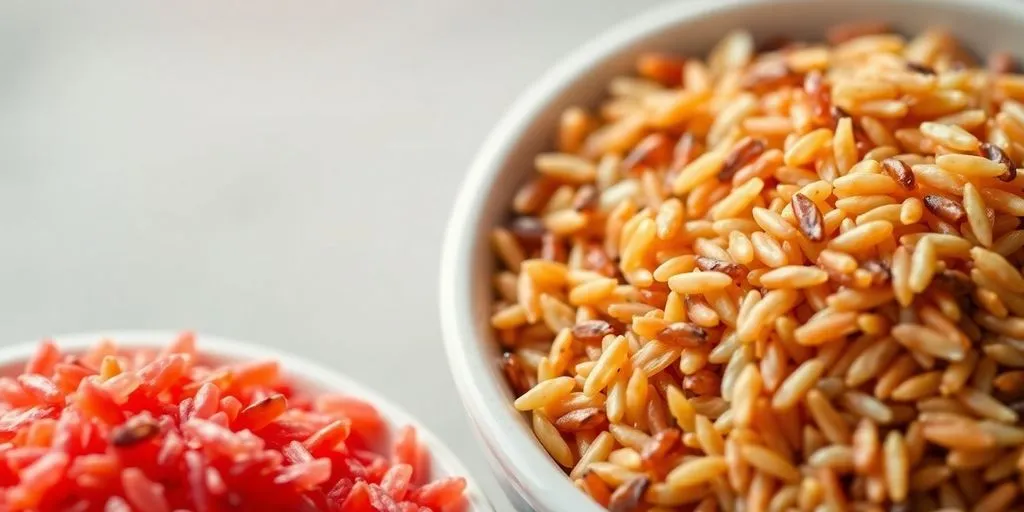
Factors to Consider for Weight Loss
When it comes to shedding those extra pounds, both red and brown rice can be your allies. They are both high in fiber, which keeps you full longer and helps manage hunger pangs. However, if you’re counting calories, you might want to keep an eye on portion sizes. Red rice is slightly more nutrient-dense, offering a bit more in terms of antioxidants. But brown rice has its own perks with a good amount of magnesium and zinc. So, which one should you choose? It might come down to personal preference or what’s available in your pantry.
Digestive Health Benefits
Both red and brown rice are excellent for your gut. They are packed with fiber, which aids digestion and keeps things moving smoothly. Red rice, with its rich antioxidant content, can also help reduce inflammation in the digestive tract. Meanwhile, brown rice is known for being gentle on the stomach and can be a great option if you’re dealing with digestive issues. So, whether you go for red or brown, your tummy will thank you.
Impact on Cholesterol Levels
Looking to keep your cholesterol in check? Both types of rice can help. They contain compounds that assist in lowering LDL (bad) cholesterol levels. Red rice, thanks to its anthocyanins, might have a slight edge in this department. But don’t discount brown rice, as its fiber content is also beneficial for heart health. If you’re trying to decide, consider alternating between the two to get the best of both worlds.
When choosing between red rice and brown rice, think about your health goals and taste preferences. Both are nutritious options that can fit well into a balanced diet. It’s not about picking one over the other but finding the right balance that works for you.
Culinary Uses and Flavor Profiles
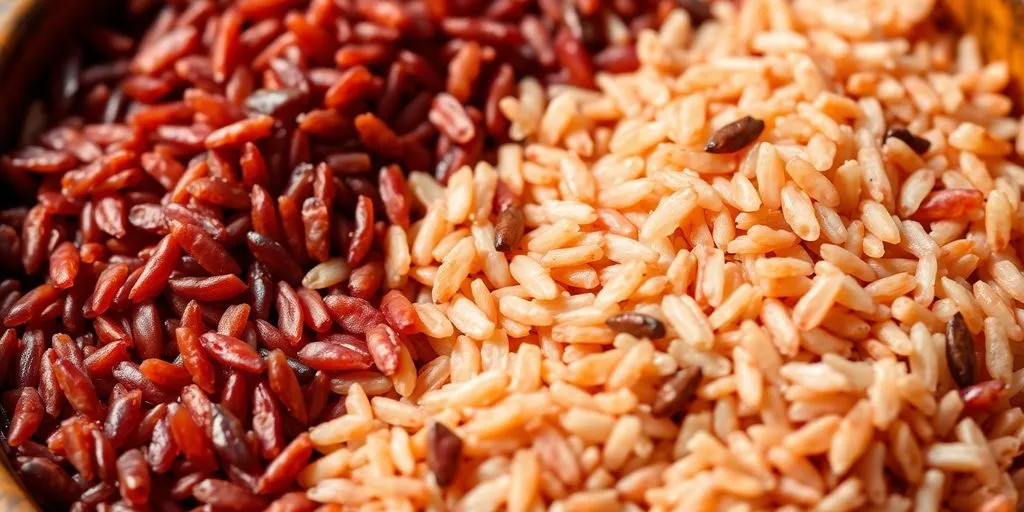
Cooking Techniques for Red Rice
Cooking red rice can be a bit of an adventure. Start by rinsing the grains under cold water to remove excess starch. Then, boil the rice in a pot with a 1:2.5 ratio of rice to water. Bring it to a boil, then reduce the heat to a simmer, covering the pot. Let it cook for about 30-40 minutes until the grains are tender. Red rice has a nutty flavor and chewy texture, making it perfect for hearty dishes.
Flavor Pairings with Brown Rice
Brown rice is incredibly versatile in the kitchen. Its mild, slightly nutty taste pairs well with a variety of ingredients. Try it with:
- Grilled vegetables like bell peppers and zucchini
- Lean proteins such as chicken or tofu
- Fresh herbs like cilantro or parsley
Brown rice is a great base for stir-fries or salads, absorbing flavors from sauces and dressings beautifully.
Cultural Significance of Each Rice Type
Red rice and brown rice both hold cultural significance in various regions. Red rice is often used in traditional Asian dishes, especially in Explore the diverse world of rice where its unique color adds visual appeal. Brown rice, on the other hand, is a staple in many health-conscious diets worldwide. It’s praised for its whole grain benefits and is often seen in cuisines that focus on healthy eating.
While both red and brown rice offer unique flavors and textures, their cultural roots and culinary flexibility make them valuable staples in kitchens around the globe.
Environmental and Economic Considerations
Sustainability of Rice Cultivation
Rice farming has a big impact on the environment. It’s not just about growing the rice, but also how it’s done. Traditional rice farming uses lots of water and can lead to soil degradation. However, some farmers are moving towards more sustainable practices. These methods aim to reduce water usage and improve soil health. Techniques like alternate wetting and drying can help save water, while crop rotation can maintain soil nutrients.
Cost Comparison of Red and Brown Rice
When it comes to cost, there’s a noticeable difference between red and brown rice. Red rice often comes with a higher price tag. This is because it’s less common and sometimes considered a specialty item. Brown rice, on the other hand, is more widely available and usually cheaper. Here’s a simple breakdown:
| Type of Rice | Average Cost per Pound |
|---|---|
| Red Rice | $3.50 |
| Brown Rice | $2.00 |
Availability in Global Markets
The availability of red and brown rice varies across different regions. Brown rice is more commonly found in supermarkets worldwide. Red rice, however, might be harder to come by in some areas, often appearing in specialty or health food stores. This can affect not only the price but also the accessibility for consumers looking to include it in their diet.
Considering both environmental impacts and economic factors is key when deciding between red and brown rice. It’s not just about personal health but also about making choices that support sustainable practices.
For more insights on the environmental impact of rice cultivation, check out this review on rice bio-waste, which explores its environmental and health impacts.
Conclusion
So, when it comes down to choosing between red rice and brown rice, it really depends on what you’re looking for. Both types are packed with nutrients and have their own unique benefits. Red rice stands out with its high antioxidant levels, which might give it a slight edge if you’re focused on boosting your immune system.
On the other hand, brown rice is a great source of essential minerals like iron and zinc. Plus, both are high in fiber, which is great for keeping you full and supporting digestion. At the end of the day, both are healthier options compared to white rice, so you can’t go wrong with either choice. Just pick the one that fits your taste and nutritional needs best.
Frequently Asked Questions
What are the main differences between red rice and brown rice?
Red rice is packed with antioxidants called anthocyanins, which give it its color. Brown rice has more fiber and protein, making it a great option for those looking to manage their weight.
Which type of rice is better for heart health?
Red rice may be better for heart health due to its high antioxidant content, which can help reduce inflammation and improve cholesterol levels.
Can people with diabetes eat red or brown rice?
Yes, both red and brown rice can be part of a diabetes-friendly diet. They have a lower glycemic index compared to white rice, which means they have a slower impact on blood sugar levels.
How do the flavors of red rice and brown rice differ?
Red rice has a nutty and earthy flavor, while brown rice has a milder, slightly nutty taste. Both can be paired with a variety of dishes.
Is red rice more expensive than brown rice?
Red rice can sometimes be more expensive than brown rice due to its unique color and higher antioxidant content. However, prices can vary depending on where you purchase them.
Are there any environmental concerns with rice production?
Rice production can have environmental impacts, such as water usage and greenhouse gas emissions. Choosing sustainably grown rice can help reduce these effects.

